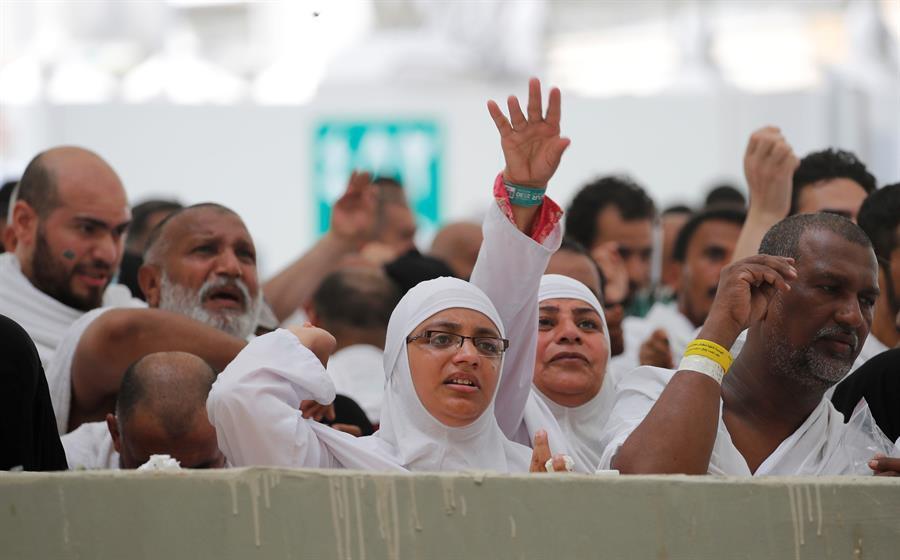
More than two million Muslims on Aug. 11 threw stones at a symbolic representation of the devil as part of the annual Hajj pilgrimage in Saudi Arabia.
The final ritual of the Hajj, the “Great Jamara” - in which pilgrims throw seven stones at a wall representing Satan -- is intended to remind Muslims of the devil's persistent efforts to lead the faithful astray.
According to the Muslim tradition, the Prophet Ibrahim was the first to perform the ritual after the devil tried to incite him to disobey Allah.
Over two million pilgrims, some 80,000 of them came from Turkey, took part in this year's pilgrimage.
On Aug. 10, Muslim pilgrims ascended the Mt. Arafat plain near the Saudi city of Mecca.
It was on Mt. Arafat that Prophet Muhammad delivered his final sermon.
Muslims spent the entire day on the Arafat plateau while praying continuously and asking God for forgiveness and mercy.
At sunset, they descended the mountain and headed back to Muzdalifah, the halfway point between Arafat and Mina.
Later, in Mina, they took part in the symbolic “stoning of the devil” the ritual.
The ritual is a recreation of Prophet Abraham's stoning of the devil at the three places where the latter is said to have tried to dissuade Abraham from obeying God's order to sacrifice his son, Ismael.
After the stoning ritual, pilgrims sacrificed animals to mark the beginning of the four-day Eid al-Adha holiday.
The Hajj pilgrimage is the "fifth pillar" of the Islamic faith- a ritual that must be performed by all Muslims, if financially feasible, at least once in their lives.
While the Hajj is generally associated with Islam's final prophet, Muhammad, who lived in the seventh century, Muslims believe that the pilgrimage to Mecca dates back thousands of years to pre-Islamic times.
The pilgrimage takes place every year from the eight to 12th day of Dhu al-Hijjah, the 12th and final month of the Islamic calendar.
On these five days, Muslim pilgrims converge on Mecca, where they circumambulate the Kaaba seven times; run between the hills of Al-Safa and Al-Marwah; drink water from the sacred Well of Zamzam; stand vigil on the plains of Mt. Arafat; and, lastly, throw stones at the devil.
Because the Islamic calendar is based on the lunar cycle, the date of the Hajj changes each year on western calendars.